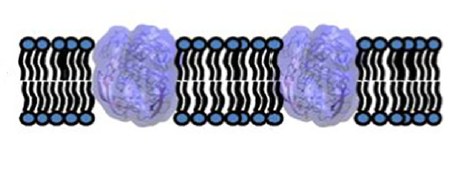Sophie Combet, Fabrice Cousin, Human Rezaei, Sylvie Noinville
Soluble oligomers of prion proteins (PrP), produced during amyloid aggregation, have emerged as the primary neurotoxic species, instead of the fibrillar end-products, in transmissible spongiform encephalopathies. However, whether the membrane is among their direct targets, that mediate the downstream adverse effects, remains a question of debate. Recently, questions arise from the formation of membrane-active oligomeric species generated during the β-aggregation pathway, either in solution, or in lipid environment. In the present study, we characterized membrane interaction of off-pathway oligomers from recombinant prion protein generated along the amyloid aggregation and compared to lipid-induced intermediates produced during lipid-accelerated fibrillation. Using calcein-leakage assay, we show that the soluble prion oligomers are the most potent in producing leakage with negatively charged vesicles. Binding affinities, conformational states, mode of action of the different PrP assemblies were determined by thioflavin T binding-static light scattering experiments on DOPC/DOPS vesicles, as well as by FTIR-ATR spectroscopy and specular neutron reflectivity onto the corresponding supported lipid bilayers. Our results indicate that the off-pathway PrP oligomers interact with lipid membrane via a distinct mechanism, compared to the inserted lipid-induced intermediates. Thus, separate neurotoxic mechanisms could exist following the puzzling intermediates generated in the different cell compartments. These results not only reveal an important regulation of lipid membrane on PrP behavior but may also provide clues for designing stage-specific and prion-targeted therapy.
https://doi.org/10.1016/j.bbamem.2018.12.001





